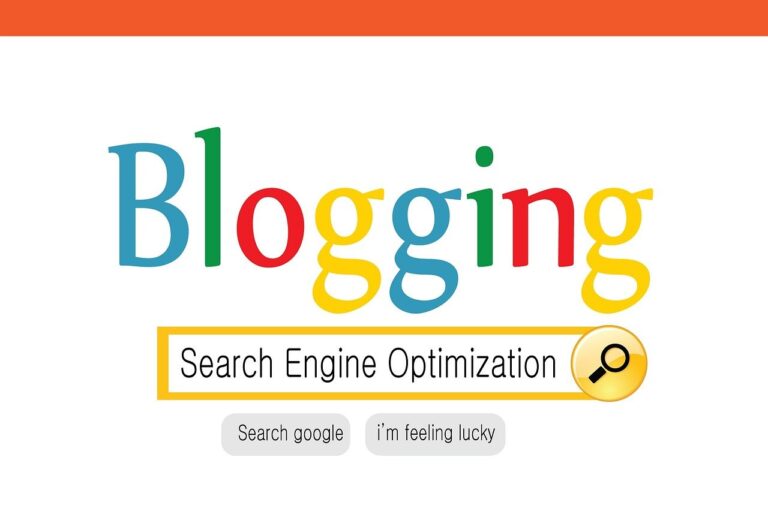Non-verbal communication plays a crucial role in client interactions. It often conveys more information than words alone. Body language, including facial expressions, posture, and gestures, can significantly impact how clients perceive and respond to you.
Understanding and effectively using non-verbal cues can enhance rapport, build trust, and improve overall communication in professional settings.

Healthcare professionals, in particular, can benefit from honing their non-verbal communication skills. A warm smile, open posture, and appropriate eye contact can help put patients at ease and foster a more comfortable environment for discussing sensitive health issues.
By paying attention to your own body language and reading your clients’ non-verbal signals, you can create more meaningful and productive interactions.
Mastering non-verbal communication involves practice and self-awareness. It’s essential to be mindful of your facial expressions, maintain a relaxed yet attentive posture, and use gestures that complement your verbal messages.
By developing these skills, you can enhance your effectiveness in client interactions and build stronger professional relationships.
Key Takeaways
- Non-verbal cues often communicate more than spoken words in client interactions
- Mastering body language can significantly improve rapport and trust with clients
- Practicing self-awareness and intentional non-verbal communication enhances professional effectiveness
Understanding Non-Verbal Communication
Non-verbal communication plays a crucial role in client interactions. It encompasses a wide range of subtle cues that can significantly impact the outcome of your meetings and relationships.
Defining Non-Verbal Communication
Non-verbal communication refers to the transmission of messages without using words. It includes body language, facial expressions, gestures, and posture. These elements make up a significant portion of your overall communication.
Eye contact, hand movements, and even the way you sit can convey powerful messages. Your tone of voice, pitch, and speaking pace also fall under this category.
Non-verbal cues often reveal your true feelings and attitudes, even when your words might say otherwise. They can express emotions, reinforce your verbal message, or contradict what you’re saying.
The Importance of Non-Verbal Cues in Client Interactions
Understanding and interpreting non-verbal cues is crucial for successful client interactions. These signals can help you gauge your client’s comfort level, interest, and engagement.
Paying attention to your client’s body language can provide valuable insights into their thoughts and feelings. For example, crossed arms might indicate defensiveness, while leaning forward could show interest.
Your own non-verbal communication is equally important. Maintaining appropriate eye contact and an open posture can help build trust and rapport with your clients.
Mirroring your client’s positive body language can also enhance your connection. This technique involves subtly matching their posture or gestures to create a sense of harmony.
Key Aspects of Body Language
Body language encompasses several critical components that shape how we communicate nonverbally. These elements work together to convey messages, emotions, and attitudes, often unconsciously influencing our interactions with clients.
Facial Expressions
Your face is a powerful communication tool. Subtle changes in your facial muscles can express a wide range of emotions and reactions. A genuine smile, characterized by crinkled eyes and lifted cheeks, can instantly put clients at ease.
Maintaining appropriate eye contact is crucial. It demonstrates attentiveness and builds trust. Aim for about 60-70% eye contact during conversations, breaking occasionally to avoid appearing intimidating.
Be mindful of microexpressions – fleeting facial movements that reveal true feelings. These can include brief flashes of surprise, disgust, or contempt. Learning to recognize and control these can improve your ability to manage client perceptions.
Posture
Your posture speaks volumes about your confidence and engagement level. Stand or sit up straight with your shoulders back to project confidence and openness. This conveys confidence and openness to your clients.
Avoid crossing your arms, as this can appear defensive or closed off. Instead, keep your arms relaxed at your sides or use open gestures.
Leaning slightly forward when listening shows interest and engagement. However, be cautious not to invade personal space, which can make clients uncomfortable.
Mirroring your client’s posture subtly can help build rapport. This technique involves adopting similar postures or movements, creating a sense of connection.
Gestures
Hand gestures can enhance your verbal communication and help emphasize key points. Use open palm gestures to appear honest and trustworthy. Pointing with your index finger can seem aggressive, so opt for open-handed gestures instead.
Be aware of unconscious gestures like fidgeting or playing with objects, which can signal nervousness or distraction. Practice keeping your hands calm and purposeful during client interactions.
Cultural differences in gestures are important to consider. What’s acceptable in one culture may be offensive in another. Research and adapt your gestures when working with clients from diverse backgrounds.
Using illustrators – gestures that complement your words – can make your communication more engaging and memorable. For example, use your hands to indicate size or direction when describing something.
The Role of Facial Expressions in Client Interactions
Facial expressions are a powerful tool in client interactions. They convey emotions, intentions, and reactions without words. Understanding and effectively using facial expressions can significantly enhance your communication with clients.
Recognizing and Interpreting Facial Cues
Facial expressions make up 93% of social meaning in neurotypical social settings. To improve your client interactions, focus on these key facial cues:
- Eyebrows: Raised eyebrows often indicate surprise or interest.
- Eyes: Wide eyes can signal excitement or fear, while narrowed eyes may suggest skepticism.
- Mouth: A genuine smile involves both the mouth and eyes (known as a Duchenne smile).
Pay attention to microexpressions – brief, involuntary facial movements that reveal true emotions. These can last for a fraction of a second but provide valuable insights into your client’s true feelings.
Cultural differences can impact facial expressions. Be aware that certain expressions may have different meanings across cultures. Continuously educate yourself on these nuances to avoid misinterpretations.
Using Facial Expressions to Convey Empathy and Understanding
Your facial expressions play a crucial role in building rapport with clients. Here are some ways to use them effectively:
- Maintain appropriate eye contact to show engagement.
- Mirror your client’s expressions subtly to create a sense of connection.
- Use a warm, genuine smile to create a welcoming atmosphere.
Avoid negative facial expressions like frowning or eye-rolling, as these can damage the client relationship. Instead, practice maintaining a neutral or positive expression, even when faced with challenging situations.
Remember that facial expressions work in conjunction with spoken words and other non-verbal acts. Ensure your facial expressions align with your verbal communication to maintain consistency and build trust with your clients.
The Impact of Posture on Client Perception

Posture plays a crucial role in shaping how clients perceive you during interactions. Your body positioning can convey confidence, openness, and engagement, or it may unintentionally signal disinterest or defensiveness.
Open vs. Closed Posture
Open posture involves keeping your body relaxed and oriented towards the client. Uncross your arms and legs, face the client directly, and lean slightly forward to show interest. This conveys approachability and credibility.
Closed posture, on the other hand, includes crossed arms, turned away body, or hunched shoulders. These gestures can make you appear defensive or uninterested.
To project openness:
- Keep your arms at your sides or use open hand gestures
- Maintain an upright, relaxed spine
- Point your feet towards the client
- Avoid creating barriers with objects like clipboards or computers
How to Use Posture to Build Trust and Rapport
Your posture can significantly impact your clients’ emotional well-being. To build trust and rapport:
- Mirror your client’s posture subtly to create a sense of harmony
- Maintain an open stance to invite conversation
- Use a slight forward lean to show engagement
- Keep your head level and make appropriate eye contact
Remember to adjust your posture based on the situation. In tense moments, a more relaxed posture can help de-escalate. During serious discussions, a more upright posture conveys attentiveness.
Practice awareness of your posture in various situations. Over time, positive postural habits will become natural, enhancing your ability to connect with clients effectively.
Effective Use of Gestures in Communication

Gestures play a crucial role in enhancing your communication and conveying messages effectively. When used properly, they can reinforce your words and help you connect with clients on a deeper level.
Common Gestures and Their Meanings
Hand gestures can significantly impact your communication. Open palms suggest honesty and openness, while clenched fists may indicate tension or aggression.
Pointing can be seen as accusatory, so use it sparingly. Instead, try an open-handed gesture when indicating direction or referring to someone.
Nodding shows agreement and encourages others to continue speaking. However, excessive nodding might make you appear overeager or insincere.
Crossing your arms often signals defensiveness or discomfort. To appear more approachable, keep your arms relaxed at your sides or use them for expressive gestures.
How to Use Gestures to Enhance Verbal Communication
To strengthen your verbal messages, align your gestures with your words. For example, use expansive gestures when discussing growth or opportunities.
Practice natural, fluid movements. Avoid rigid or robotic gestures that can distract from your message.
Use gestures to emphasize key points. A subtle hand movement can draw attention to important information.
Be mindful of cultural differences in gestures. What’s acceptable in one culture may be offensive in another.
Maintain a balance between gesturing and stillness. Too much movement can be distracting, while too little may make you appear stiff or uncomfortable.
Practical Strategies for Enhancing Non-Verbal Communication Skills

Improving your non-verbal communication skills requires intentional practice and self-reflection. By focusing on key areas, you can significantly enhance your ability to convey messages effectively without words.
Self-Awareness and Observation
Start by becoming more aware of your own non-verbal cues. Pay attention to your posture, facial expressions, and gestures throughout the day. Notice how these change in different situations or emotions.
Observe others’ body language and how it affects your perceptions of them. Look for inconsistencies between verbal and non-verbal messages. This practice will sharpen your ability to read and interpret non-verbal signals.
Keep a journal to record your observations and insights. Note any patterns or habits you discover in your own non-verbal communication. Identify areas where you’d like to improve or adjust your body language.
Practicing and Refining Non-Verbal Techniques
Experiment with different non-verbal cues in low-stakes situations. Practice maintaining eye contact and using open body postures. Also, mirror positive signals of others to build rapport.
Record yourself during presentations or conversations. Review the footage to analyze your non-verbal communication objectively. Look for areas of improvement and strengths to build upon.
Role-play various scenarios with a friend or colleague. Focus on conveying specific emotions or messages through non-verbal cues alone. This exercise will help you become more intentional with your body language.
Seeking Feedback and Continuous Improvement
Ask trusted colleagues or mentors for honest feedback on your non-verbal communication. Encourage them to point out both strengths and areas for improvement. Be open to constructive criticism and use it to refine your skills.
Consider working with a communication coach or attending workshops focused on body language and non-verbal skills. These resources can provide expert guidance and structured practice opportunities.
Set specific goals for improving particular aspects of your non-verbal communication. Regularly assess your progress and adjust your approach as needed. Remember that enhancing these skills is an ongoing process that requires patience and persistence.
Case Studies and Examples

Non-verbal communication plays a crucial role in client interactions. Examining real-world scenarios and successful practitioner approaches provides valuable insights into effective body language techniques.
Real-Life Scenarios of Effective Non-Verbal Communication
A therapist notices her client’s tense shoulders and crossed arms during a session. She mirrors the client’s posture, gradually relaxing her own body. The client subconsciously follows suit, becoming more open.
In a business meeting, a sales representative maintains steady eye contact and leans slightly forward while listening to a potential client’s concerns. This conveys genuine interest and builds trust.
A doctor kneels to eye level when speaking with a young patient, reducing intimidation. As a result, the child becomes more cooperative during the examination.
Lessons Learned from Successful Practitioner-Client Interactions
Successful practitioners use non-verbal cues like nodding and maintaining eye contact to show engagement. They know that active listening involves more than just hearing words.
Mirroring a client’s body language can create rapport. However, it’s essential to do this subtly to avoid appearing insincere.
Pay attention to your client’s non-verbal signals. Misinterpreting body language can lead to communication breakdowns. If you notice inconsistencies between verbal and non-verbal cues, gently probe further.
Use appropriate touch when culturally acceptable. A light touch on the arm can convey empathy, but always respect personal boundaries.
Conclusion

Non-verbal communication plays a crucial role in client interactions. Your body language can significantly impact the outcome of your meetings and relationships.
By maintaining eye contact, you demonstrate attentiveness and build trust. Your facial expressions convey emotions and reactions, often more powerfully than words.
Posture and gestures are equally important. An open, relaxed stance invites collaboration, while crossed arms may signal defensiveness.
Your tone of voice and vocal inflections add layers of meaning to your words. They can convey confidence, empathy, or uncertainty.
Remember that non-verbal cues make up a large percentage of communication. Being aware of and improving your non-verbal skills can enhance your professional effectiveness.
Practice active listening and mirroring techniques to build rapport. Pay attention to your clients’ non-verbal signals to better understand their needs and concerns.
Frequently Asked Questions

Body language plays a crucial role in client interactions and business communication. Non-verbal cues significantly impact service quality perceptions, customer relationships, and professional outcomes.
What are the positive and negative impacts of body language in customer service?
Positive body language in customer service can build trust and rapport. Open postures, maintaining eye contact, and nodding show attentiveness and interest in customers’ concerns.
Negative body language, such as crossed arms or avoiding eye contact, may create barriers and make customers feel unwelcome or disrespected.
What is the importance of non-verbal communication in everyday business interactions?
Non-verbal communication enhances effective interaction in business settings. It helps convey emotions, attitudes, and intentions that words alone may not express.
Your body language can reinforce your verbal message, making your communication more impactful and memorable.
Can you provide examples of how body language can influence a client’s perception of service quality?
A warm smile and attentive posture can make clients feel valued and improve their perception of service quality. Maintaining appropriate eye contact shows you’re engaged and listening actively.
Conversely, fidgeting, looking at your watch, or displaying impatient gestures can negatively impact a client’s perception of your service.
How can one improve their body language to enhance professional communication?
Practice maintaining open postures by keeping your arms uncrossed and your body facing the person you’re communicating with. Work on making consistent eye contact to show interest and engagement.
Also, analyze and interpret your own body language to identify areas for improvement. Seek feedback from colleagues or mentors on your non-verbal cues.
What role does body language play in the interpretation of a customer’s needs and responses?
Body language helps you understand customers’ emotions and thoughts. Observing facial expressions, postures, and gestures can provide insights into their satisfaction levels or concerns.
Pay attention to subtle cues like leaning forward (showing interest) or leaning back (indicating discomfort) to gauge customer reactions.
In what ways can non-verbal communication shape the outcome of a patient-caregiver interaction?
Non-verbal communication can significantly impact patient comfort and trust in healthcare settings. A caregiver’s gentle touch or reassuring smile can help alleviate patient anxiety.
Maintaining a calm demeanor and using open gestures can create a supportive environment. This encourages patients to share their concerns more openly.






